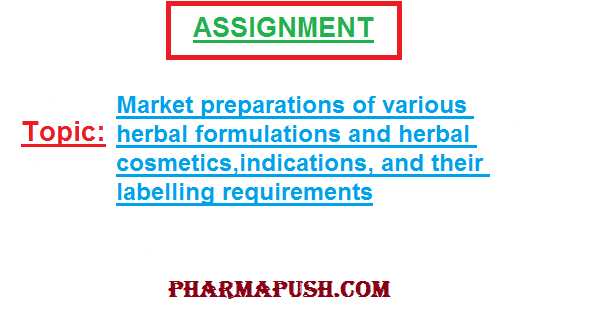What are Herbal Drug?
Herbal drugs, also known as botanical or phytomedicines, are medications derived from plants. These drugs have been used for centuries in various cultures around the world for their therapeutic properties. The use of herbal remedies is often rooted in traditional medicine and is based on the belief that plants contain compounds with medicinal properties.
Here are some key points about herbal drugs:
- Natural Origin: Herbal drugs are derived from different parts of plants, such as leaves, roots, stems, flowers, and seeds. The active ingredients in these plants can be used for therapeutic purposes.
- Traditional Medicine: Many herbal remedies have a long history of use in traditional medicine systems, such as Ayurveda, Traditional Chinese Medicine (TCM), and Native American medicine. Traditional knowledge often plays a significant role in the development of herbal drugs.
- Active Compounds: Plants contain a wide variety of chemical compounds that can have medicinal effects. These may include alkaloids, flavonoids, terpenes, and other bioactive substances. The specific combination and concentration of these compounds determine the plant’s therapeutic properties.
- Preparation and Administration: Herbal drugs can be prepared in various forms, including teas, tinctures, extracts, capsules, and topical ointments. The method of preparation often depends on the plant and the desired therapeutic effect.
- Safety Concerns: While herbal drugs are generally considered natural, they are not without potential risks. Some plants may contain toxic compounds, and there can be variations in the concentration of active ingredients. Additionally, interactions with other medications can occur.
- Scientific Research: In recent years, there has been growing interest in scientifically evaluating the efficacy and safety of herbal drugs. Researchers conduct studies to identify active compounds, understand their mechanisms of action, and assess their therapeutic potential.
- Regulation and Standardization: Regulatory agencies in various countries have established guidelines for the production, quality control, and marketing of herbal drugs. Standardization of herbal preparations helps ensure consistency in their composition and potency.
- Common Examples: Some well-known herbal drugs include ginseng, echinacea, garlic, turmeric, and chamomile. Each of these plants is believed to have specific health benefits.
Drug Interaction
Drug interactions occur when the effects of one drug are altered by the presence of another drug, food, or substance. These interactions can either enhance or reduce the effectiveness of a drug, or they can lead to unexpected side effects. Drug interactions can occur with prescription medications, over-the-counter drugs, herbal supplements, and even certain foods.
Join TelegramHere are some common types of drug interactions:
- Drug-Drug Interactions: This occurs when two or more drugs interact with each other. The interaction may result in increased or decreased drug levels in the body, affecting the therapeutic effects or causing adverse reactions. Some drugs may also compete for the same metabolic pathways in the body.
- Drug-Food Interactions: Certain foods can interact with drugs and affect their absorption, metabolism, or excretion. For example, grapefruit juice can inhibit enzymes responsible for metabolizing certain drugs, leading to increased drug levels in the body.
- Drug-Herbal Interactions: Herbal supplements can interact with medications, either enhancing or reducing their effects. St. John’s Wort, for example, is known to induce the metabolism of various drugs, leading to decreased drug levels and reduced effectiveness.
- Drug-Alcohol Interactions: Alcohol can interact with medications, intensifying or diminishing their effects. It can also increase the risk of side effects or cause adverse reactions.
- Synergistic Effects: Some drug interactions can lead to synergistic effects, where the combined action of two or more drugs is greater than the sum of their individual effects. This can be therapeutic, but it can also increase the risk of side effects or toxicity.
- Antagonistic Effects: Antagonistic interactions occur when one drug counteracts the effects of another. This can lead to reduced therapeutic efficacy or nullify the intended effects of a medication.
- Pharmacokinetic Interactions: These interactions involve changes in the absorption, distribution, metabolism, or excretion of drugs. For example, one drug may inhibit the liver enzymes responsible for metabolizing another drug, leading to increased levels of the second drug in the body.
It’s crucial for individuals to inform their healthcare providers about all the medications they are taking, including prescription drugs, over-the-counter medications, herbal supplements, and vitamins. This information helps healthcare professionals assess the potential for drug interactions and make informed decisions about treatment plans.
Factor Affecting of Herb-drug Interaction
Several factors can influence the occurrence and severity of herb-drug interactions. It’s important to consider these factors to better understand and manage potential interactions between herbal drugs and conventional medications. Here are some key factors affecting herb-drug interactions:
- Metabolism and Enzyme Systems: The liver plays a crucial role in metabolizing drugs, including herbal compounds. Some herbs may affect the activity of liver enzymes involved in drug metabolism, influencing the blood levels of medications.
- Cytochrome P450 Enzymes: Many drugs are metabolized by cytochrome P450 enzymes in the liver. Some herbs can either inhibit or induce these enzymes, affecting the metabolism of drugs and leading to potential interactions. St. John’s Wort, for example, is known to induce CYP3A4, which can impact the metabolism of various medications.
- Individual Variability: People differ in their genetic makeup, which can influence how their bodies metabolize drugs and herbs. Genetic variations in drug-metabolizing enzymes may contribute to individual susceptibility to interactions.
- Dosage and Duration of Use: The dosage and duration of herbal and conventional drug use can impact the likelihood of interactions. High doses of herbs may increase the risk of interactions, and long-term use may have cumulative effects.
- Chemical Composition of Herbs: The chemical composition of herbs can vary based on factors such as plant species, growing conditions, and harvesting methods. Different batches of herbal products may contain varying concentrations of active compounds, affecting their potential to interact with drugs.
- Herb-Drug Similarity: Some herbs contain compounds that are structurally similar to those found in pharmaceutical drugs. This similarity can lead to competition for the same metabolic pathways, potentially affecting drug levels in the body.
- Patient Health Status: The overall health status of an individual can influence their susceptibility to herb-drug interactions. People with compromised liver or kidney function may be more vulnerable to interactions due to altered drug metabolism and excretion.
- Polypharmacy: Taking multiple medications, including herbal supplements, increases the risk of interactions. The more drugs a person is taking, the greater the likelihood of potential herb-drug interactions.
- Communication with Healthcare Providers: Open communication between patients and healthcare providers is crucial. Patients should inform their healthcare team about all medications, including herbs and supplements, to receive personalized advice and monitoring.
- Quality and Standardization of Herbal Products: The quality and standardization of herbal products can vary. The use of standardized and well-regulated herbal supplements can help ensure consistent composition and minimize the risk of unexpected interactions.
Considering these factors, individuals should consult with healthcare professionals before starting any herbal supplements, especially if they are taking prescription medications. Healthcare providers can assess the potential for interactions and make informed recommendations based on the individual’s health status and treatment plan.
Study of Some Common Herbs and Their Interaction
Research on herb-drug interactions is an evolving field, and numerous studies have explored the potential interactions between common herbs and conventional medications. It’s essential to note that the evidence for herb-drug interactions can vary, and not all interactions are well-established or universally applicable. Here are a few examples of common herbs and their potential interactions with medications:
- St. John’s Wort (Hypericum perforatum):
- Interaction: St. John’s Wort is known to induce the activity of the liver enzyme CYP3A4, which can accelerate the metabolism of several drugs. This can lead to decreased blood levels and reduced effectiveness of medications such as certain antidepressants, oral contraceptives, and immunosuppressants.
- Ginkgo Biloba:
- Interaction: Ginkgo biloba may have antiplatelet effects and can increase the risk of bleeding when taken with anticoagulant or antiplatelet medications. It may also interact with certain antidepressants and anticonvulsants.
- Garlic (Allium sativum):
- Interaction: Garlic supplements may have antiplatelet effects and may increase the risk of bleeding when taken with anticoagulant medications. It may also interact with medications metabolized by CYP2E1 and affect their blood levels.
- Echinacea:
- Interaction: Echinacea may affect the activity of enzymes involved in drug metabolism, potentially impacting the blood levels of certain medications. It may interact with immunosuppressants, antivirals, and medications metabolized by CYP3A4.
- Ginseng (Panax ginseng):
- Interaction: Ginseng may interact with anticoagulant and antiplatelet medications, potentially increasing the risk of bleeding. It may also interact with certain antidiabetic drugs and immunosuppressants.
- Grapefruit Juice:
- Interaction: While not an herb per se, grapefruit juice can interact with various medications by inhibiting the activity of the CYP3A4 enzyme in the liver. This can lead to increased blood levels of certain drugs, potentially causing toxicity.
- Licorice (Glycyrrhiza glabra):
- Interaction: Licorice may affect potassium levels and can lead to increased potassium levels when taken with medications that also affect potassium levels, such as certain diuretics. It may also interact with corticosteroids and certain antihypertensive medications.
It’s important to emphasize that individual responses to herbs and medications can vary, and not everyone will experience the same interactions. Additionally, the quality and standardization of herbal products can influence their potential for interactions. Patients should always inform their healthcare providers about all the medications, including herbs and supplements, they are taking to receive personalized advice and monitoring. Healthcare professionals can help assess the risk of interactions and make appropriate recommendations for the individual’s specific health situation.
Conclusion
In conclusion, the study of herb-drug interactions is a complex and evolving field, and understanding the factors influencing these interactions is crucial for both healthcare professionals and individuals seeking complementary or alternative treatments. Here are key points to consider:
- Diversity of Interactions: Herb-drug interactions can vary widely based on factors such as the specific herb, the medication involved, individual characteristics, and overall health status.
- Metabolic Pathways: Many herb-drug interactions involve alterations in drug metabolism, particularly through liver enzymes like cytochrome P450. Understanding these metabolic pathways is essential for predicting and managing interactions.
- Common Herbs: Certain herbs, such as St. John’s Wort, Ginkgo biloba, Garlic, Echinacea, Ginseng, Grapefruit Juice, and Licorice, have been studied for their potential interactions with conventional medications.
- Quality and Standardization: The quality and standardization of herbal products play a role in the consistency of their composition and, consequently, their potential for interactions. Standardized products may provide more predictable effects.
- Patient Communication: Open communication between patients and healthcare providers is crucial. Individuals should inform their healthcare team about all medications, including herbs and supplements, to receive personalized advice and monitoring.
- Individual Variation: Genetic and individual variability can influence susceptibility to interactions. Factors such as age, liver and kidney function, and overall health contribute to the complexity of herb-drug interactions.
- Research and Evidence: The field of herb-drug interactions continues to be an area of active research. New findings and evidence contribute to our understanding of specific interactions and help refine guidelines for safe use.
- Risk Management: While herbal remedies can offer potential health benefits, it’s important to approach their use with caution, especially in combination with conventional medications. Risk management involves assessing potential interactions, adjusting doses, and monitoring for adverse effects.
Incorporating herbs into healthcare requires a balanced and informed approach. Healthcare professionals play a vital role in guiding patients on the safe and effective use of herbs, considering potential interactions, and ensuring overall health and well-being. Individuals are encouraged to seek professional advice before incorporating herbal supplements into their healthcare routine, especially if they are already taking prescription medications.


